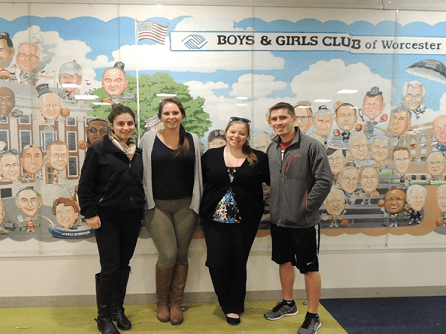For our Interactive Qualifying Project, we worked in collaboration with the Boys & Girls Club of Worcester to build a science, technology, engineering, and math (STEM) program for their students aged 10 to 13. STEM is extremely important in today’s technology-driven society, and introducing kids to these topics early can open doors to a successful life. Ultimately, the Boys & Girls Club of Worcester (BGCW) will utilize this program to consistently conciliate interest in STEM.
| Sponsor | Student Researchers | Goals & Objectives | Executive Summary | Report and Video |
Project Sponsor: Boys & Girls Club of Worcester
The Boys & Girls Club of Worcester is a non-profit organization that provides services for the neighborhood youth within the Worcester community. The organization helps its members develop qualities that will lead them to becoming active and contributing members within their community. The BGCW focuses on the importance of improving children’s lives and promoting strong relationships with the caring program staff. For more information about our sponsor, their website can be found here.
Student Researchers:
We are (from left to right) Lubna Hassan, Lindsay Braith, Alexandra Bittle, and Michael Sullivan.
- Alexandra Bittle: Computer Science/Robotics Engineering ‘17
- Lindsay Braith: Psychological Science ‘17
- Lubna Hasan: Biomedical Engineering ‘17
- Michael Sullivan: Actuarial Mathematics ‘17
Goals & Objectives:
The overarching goal of our project was to develop and implement a STEM program to benefit the students at the Boys & Girls Club of Worcester (BGCW). In the spring of 2015, the Club implemented a six-week robotics program to fulfill grant requirements and found the program to be a topic of interest amongst the students. We hoped to foster that interest in robotics to grow into an overall interest in STEM fields, giving student participants a sense of confidence in their STEM-oriented abilities. In order to fulfill this goal, we developed the following objectives:
Objective 1: Conduct a meta-analysis of existing STEM enrichment programs that working with 10-13 year old students
Objective 2: Identify preconceptions and stereotypes surrounding STEM among the 10-13 year olds at the BGCW
Objective 3: Determine learning outcomes of the program
Objective 4: Develop a STEM curriculum for the BGCW
Objective 5: Prototype portions of the curriculum with the youth
Objective 6: Evaluate and refine the recommended program based on the reception of the prototype

